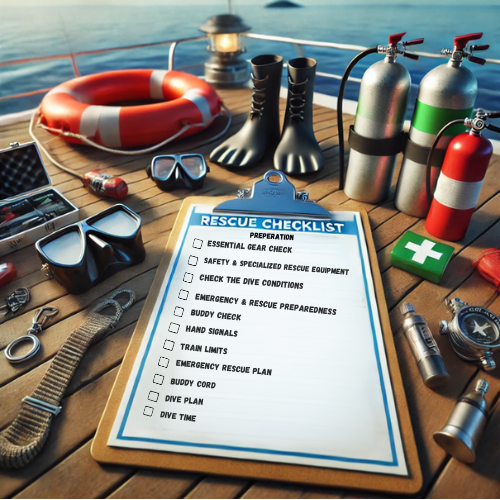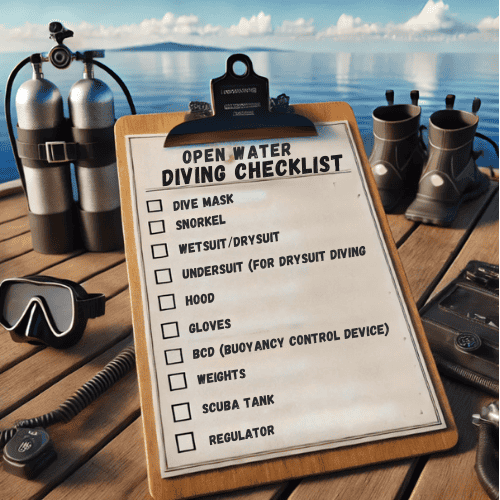We may recommend products related to the content you're reading. If you use any of these links, we might earn a commission. This doesnt add any costs for you, but it helps support our mission. Thank You!
Essential Advanced Open Water Gear
Safety Equipment Advanced Open water diving
Preparations for a Advanced Open Water Diver
1. Gear Check
- Mask – Clean, defogged, and properly fitted.
- Snorkel – Attached to the mask (optional but useful).
- Fins – Correct size and securely fitted.
- Wetsuit/Drysuit – Proper fit for the water temperature.
Undersuit (for drysuit diving)
- Hood & Gloves – If diving in cold water.
- BCD (Buoyancy Control Device) – Correctly adjusted, inflates/deflates properly.
- Weights – Proper amount secured in weight pockets or belt.
- Tank – Properly filled (check pressure gauge).
- Regulator & Octopus – Correctly attached and working.
- Dive Computer – Battery checked, correctly set for the dive.
- Compass – Essential for navigation
2. Dive Plan Discussion
- Review the dive plan with your buddy:
- Maximum depth
- Bottom time
- Ascent rate
- Safety stops & deep stops
- Emergency signals and procedures
- Agree on underwater communication signals.
- Agree on turnaround pressure (air pressure at which you begin your return to exit point or ascent).
- Discuss what to do if you get separated (usually: look for 1 minute, then ascend).

3. Check The Dive Conditions
- Check water conditions:
- Visibility
- Currents
- Water Temperature
- Waves/ Surge
- Check weather conditions (wind, storms, sun exposure).
- Identify potential hazards (boats, marine life, objects underwater).

4. Buddy Check - Begin With Review and Friend(BWRAF)
Before every dive, perform a buddy check using the BWRAF acronym:
- BCD – Inflate and deflate to check function.
- Weights – Ensure they are properly secured and can be released in an emergency.
- Regulator – Test primary and octopus by breathing through both.
- Air Supply – Tank is fully open, pressure is checked.
- Final Check – Mask, fins, and all gear are secure.
5. Advanced Open Water Diver Tips:
- Plan your dive, dive your plan.
- Always stay close to your buddy (within arm’s reach).
- Regularly check your gas supply and depth.
- Breathe slowly and continuously – never hold your breath.
- Always carry a cutting tool and SMB.
- Monitor your depth and air supply regularly.
- Maintain excellent buoyancy control.
- If in doubt, ascend slowly and safely.
- Communicate clearly with hand signals or slates.
- Stay within your training limits – don’t attempt a dive beyond your experience.
Enjoy Your Dive!
🌊 Have an amazing dive, take in the beauty of the underwater world, and most importantly, stay safe and have fun!
📸 We’d love to see your diving adventures! Send your best dive pictures to info@roadtripaway.com, and we might feature your photo in our blogs!









